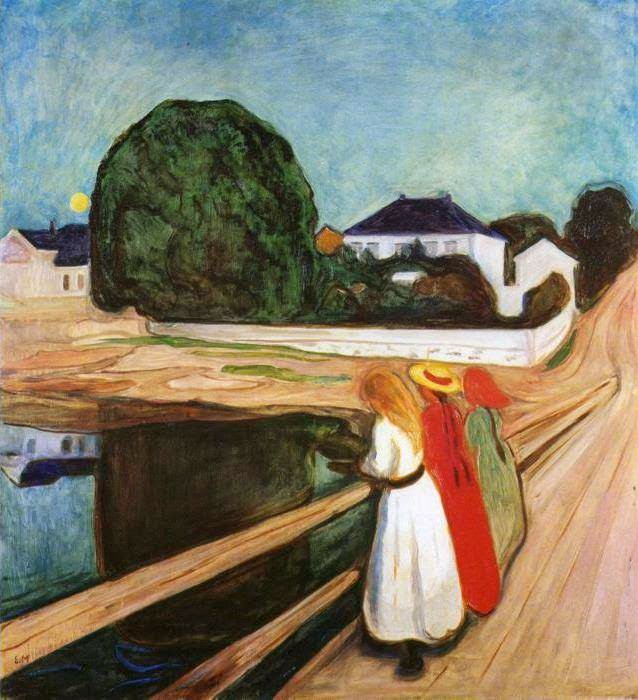Deer in the Forest 2 by Franz Marc
This picture shows, through an impossible spectrum of colors, a pack of deer camouflaged in the forest. The panting depicts an entire family of deer, partially alert, partly surprised, just like deer are in their natural environment. Those who had been lucky to see deer in the wilderness will find in this painting something that will likely remind them of that encounter.
Despite the fact that Marc painted a number of works with a similar color combination and generally with animals as the subject, this painting is quite unique in terms of lighting and shade areas. Note how the sun entering the forest diagonally from the top-left corner cuts the painting in three areas.
A similar painting from the same author is Stables
Follow this blog in Twitter @ArteInterpret
Esta pintura muestra, a traves de una escala de color imposible, los ciervos mimetizados en el bosque. El cuadro presenta a una familia completa de ciervos, medio alerta, medio sorprendidos, como son los ciervos en su ambiente natural. Aquellos que han tenido la suerte de haber visto ciervos en estado salvaje en el bosque encontraran en esta pintura algo que les recordara ese momento.
A pesar de que Marc ha pintado varias obras en esta gama de color y en general con temas de animales, esta pintura es unica en cuanto al manejo de luz y sombra que corta la obra en dos areas que resaltan ciertos miembros de la familia de ciervos. Otra obra del estilo es El establo
Pueden seguir este blog en Twitter en @ArteInterpret






